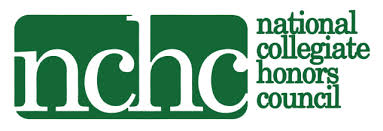Visibly Ill: Seeing the Body in Medicine
Seminar - UHON 301
Instructor(s): Amy Farnbach Pearson
Course Description
What is a medical examination, really? Western biomedicine is founded in physicians’ specialized perception of the patient’s body – anatomy, genes, technology to “see inside,” different risks and different treatments based on ostensibly visible differences such as race. But these ways of seeing are not universal, and are tied up in differences in power between medical practitioners and patients. This class will explore alternative perceptions of the body and the historical development of medical perception, from the bodysnatchers of the 18th and 19th centuries through fetal ultrasound, genetic testing, and technologies for self-monitoring like pedometers and smartwatches. For each of these, we will ask: Why do practitioners look at the body in this way? What does this allow them to see? What does it keep them from seeing? How does it affect our own perceptions of our bodies, and our lived experiences of health and illness?
Texts
A range of theory and primary texts will be used, including 19th through 20th-century medical writing on perception of the body in western and non-western contexts, such as:
Engels, Frederick. 1844. The Condition of the Working-Class in England. Reprint 1892. Trans. Florence Kelley Wischnewetzky. London: Swan Sonnenschein & Co
Foucault, Michel. 1963. The Birth of the Clinic: An Archaeology of Medical Perception. Reprint, AM Sheridan Smith (Trans.), 1994. New York: Vintage Books.
Gravlee, Clarence C. 2009. “How Race Becomes Biology: Embodiment of Social Inequality.” American Journal of Physical Anthropology 139 47–57.
Kuriyama, Shigehisa. 1999. “Part II: Styles of Seeing.” In: The Expressiveness of the Body and the Divergence of Greek and Chinese Medicine. New York: Zone Books.
Richardson, Ruth. 1988. Death, Dissection and the Destitute. London: Phoenix Press.
In addition, a range of theory and primary texts will be used, including 19th through 20th-century medical writing on perception of the body in western and non-western contexts.
Requirements
In addition to preparation for and participation in class, students will complete brief oral and written assignments – including leading class discussion, short essays, memes, infographics and elevator pitches. Using a project planning approach, students will develop their own project plans and midsemester checkpoints to develop a 2,500-word paper analyzing the (western or non-western) medical perception of a pathology – broadly construed – of their choosing.
About the Instructor(s): Amy Farnbach Pearson
Amy Farnbach Pearson received her PhD in Anthropology from Arizona State University. She is a historical anthropologist specializing in the social construction of medical knowledge and practice. Her research examines sociocultural influences on western medical concepts of health and disease, doctor-patient interactions, and quality of care; her dissertation focused on the diagnosis and treatment of tuberculosis in nineteenth-century Scottish charitable hospitals.



Social Media
For news, information, prizes and more fun stuff follow us on our social media!
Honors College Resources